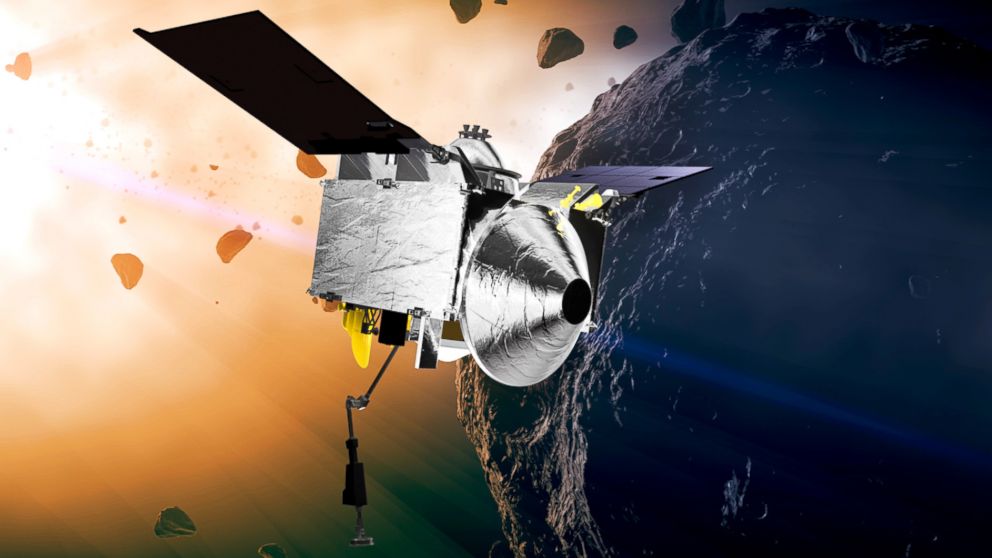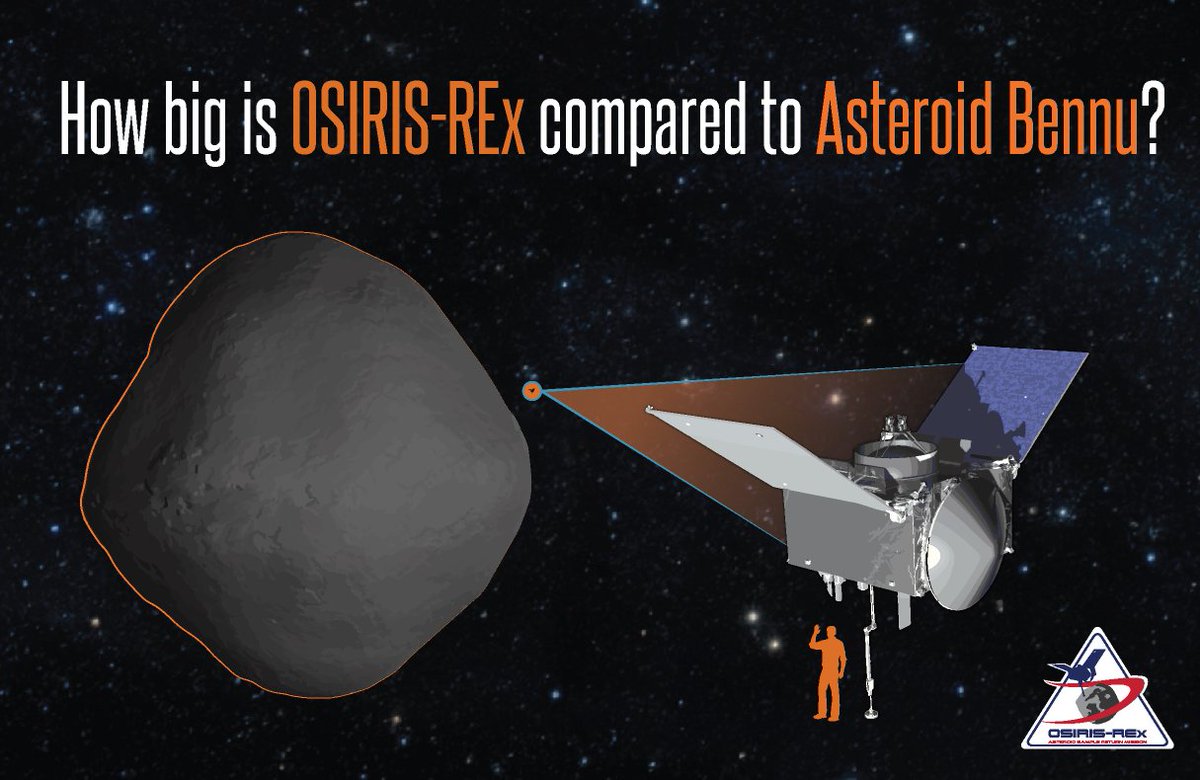NASA could use paint to
defend our planet from a doomsday asteroid that may wipe out life on Earth,
according to one of the agency's top engineers. It was recently revealed that
the rogue space rock 101955 Bennu, which is larger than the Empire State
Building, could collide with our planet in 2135 Dr Michael Moreau, a scientist
for NASA’s OSIRIS-REx mission, which is sending a probe to study the rock, said
a spacecraft could be sent to paint Bennu to divert it.
Changing the colour of part
of the asteroid would expose it to solar radiation, which could heat the object
up enough to change its orbit and miss our planet.
Speaking to Gizmodo, Dr
Moreau said: 'Even just painting the surface a different colour on one half
would change the thermal properties and change its orbit.'
Bennu is a potentially
hazardous object discovered in 1999 that measures a staggering 492 metres
(1,614 feet) in diameter according to NASA estimates. There is a small chance, around 1 in 2,700 odds
that Bennu will strike Earth in 2135 based on its current orbital path, and
some scientists have suggested hitting it with a nuclear weapon to avoid a
devastating collision According to Dr Moreau, a mission to paint the asteroid
presents a far simpler solution should Bennu pose a threat to our planet in 120
years' time.
The sun constantly pelts
objects in the solar system with tiny particles of solar radiation, each
exerting a small amount of pressure. Because Bennu is small compared to a
planet or star, weighing around 13 times the mass of the Great Pyramid of Giza,
these particles can gradually alter its orbit.
If scientists could make
part of the rock more susceptible to solar radiation by painting it a dark
colour, that may alter its path enough to avoid hitting Earth. Scientists first
need to better study its composition and orbit around the sun to determine the
best course of action.
NASA’s OSIRIS-REx
spacecraft will study Bennu further when it reaches the rock in December, with
the probe set to return to Earth with samples in 2023. Dr Moreau manages the
craft's Flight Dynamics division.
A number of proposals on
how scientists may stop Bennu have been put forward since its discovery in
1999, but a study published last week suggested it may be impossible to stop
the space rock.
Scientists revealed that
even the most advanced technology would prove 'inadequate' for deflecting the
huge asteroid.
While it could be possible
to divert a near-Earth object (NEO) by slamming into it with a so-called
impactor, experts say a nuclear explosion may be the best bet when time is
running out. In a new paper, scientists from NASA and the National Nuclear
Security Administration laid out a plan for the Hypervelocity Asteroid
Mitigation Mission for Emergency Response (HAMMER). The 8.8-ton HAMMER
spacecraft could be used to steer itself directly into a small asteroid, or
blow the space rock up using a nuclear device, according to BuzzFeed.
The team devised a proposal
around a potential impact with the 1,600-foot-wide asteroid Bennu. The two
realistic responses considered are the use of a spacecraft functioning as
either a kinetic impactor or a nuclear explosive carrier to deflect the
approaching NEO,' the authors wrote in the study, published to the journal Acta
Astronautica.
‘But, there are several
factors that would determine the best approach. The asteroid's size and mass
must be taken into consideration, along with the amount of time available
before it hits Earth. Plus, there are always 'various uncertainties.'
'Whenever practical, the
kinetic impactor is the preferred approach, but various factors, such as large
uncertainties or short available response time, reduce the kinetic impactor's
suitability and, ultimately, eliminate its sufficiency,' the authors wrote. By
driving multiple spacecraft into the asteroid's path, it could be possible to
slow the object down and throw it off course to avoid a collision with Earth.
If the conditions aren't
right to use the kinetic impactor, however, nuking it might be the only option.
'If the asteroid is small enough, and we detect it early enough, we can do it
with the impactor,' physicist David Dearborn of the Lawrence Livermore National
Laboratory told BuzzFeed News. 'The impactor is not as flexible as the nuclear
option when we really want to change the speed of the body in a hurry.'
Via Dailymail






